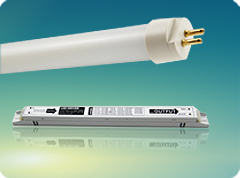Based on colors, structures, features of the light-out surface, and luminous intensity as well as working current, LED lights could be divided into various types:
1. According to the color of the light source: red lights, orange lights, green lights (more detailedly: olivine, standard green, and pure green), and blue lights. In addition, some LED lights may even contain chips of two or three colors.
LED lights could also be divided into four types: colored transparent ones, colorless transparent ones, colored scattering ones, and colorless scattering ones. Scattering LED lights could be adopted as indicator lights.
2. According to the features of the light-out surface: round lights, square lights, rectangular lights, surface luminotron, lateral tubes, and mini-tube for surface mounting. Round LED lights may have different diameters: φ2mm, φ4.4mm, φ5mm, φ8mm, φ10mm, and φ20mm.
Based on the half-value angle, we could predict the distribution situation of round luminous intensity angles:
1) High directivity: normally prong epoxy sealing or metal reflection cavity sealing and there is no scattering diluents. The half-value angle is 50~20° or less. This kind of light could be used for local lighting or combine with light detector to form automatic detecting system.
2) Standard type: normally adopted as indicator lights, and the half-value angle is 20~45°.
3) Scattering type: i.e. indicator lights with large viewing angles. The half-value angle is 45~90°or more, and there are more scattering diluents.
3. According to the structure of LED lights: entire epoxy sealing, metal base epoxy sealing, ceramic base epoxy sealing, and glass sealing.
4. According to the luminous intensity and working current of LED lights: common brightness (luminous intensity is less than 10mcd), super brightness (luminous intensity is more than 100mcd), and high brightness (luminous intensity is between 10-100mcd). Generally speaking, the working current of LED lights is around 10-90mA, and for under-current LEDs the working current is below 2mA (the brightness is same with common light sources).





